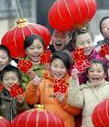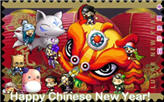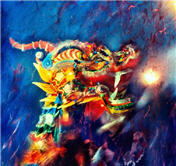guest |
February 2nd, 2012
The three Chinese New Year I spent in Hangzhou (three hours’ drive from
Shanghai) have now muddled into one big celebratory memory: into one giant steamed bun, baozi: into one enormous good luck lantern. Chinese New Year, for me, was always a kind of alien Christmas with its red and gold, music and food, cards and gifts. The place in my mind where I most vividly experience the festivities are the streets surrounding Xihu, West Lake near the centre of the town. There, the crisp rattle of fireworks becomes a part of the air that Hangzhou breathes and the booming and cracking doesn’t pause until the two weeks are over. My most vivid impressions…
Happy Chinese New Year! This January will be the start 
of the Year of the Dragon, as the world welcomes the Chinese New Year. The New Year falls in January due to the track of the new moon, as the Chinese calendar is a mixture of the Gregorian and lunar-solar calendars. Did you know that it’s such an auspicious year that many couples are hoping to have a child born during the Year of the Dragon? Read this full article to get to know many other aspects of the Chinese New Year and see some super pictures.
Read more.. »
Chinese New Year is rich in traditions, rituals and folklores. 
The celebrations take place over 15 days. It has been said that it is a combination of the US Thanksgiving, and Western Christmas and New Year. This is hardly an exaggeration! The origin of the Chinese New Year itself is centuries old – in fact, they say too old to actually be traced. All agree, however, that the word Nian, which in modern Chinese means “year”, was originally the name of a monster that preyed on people the night before the beginning of a new year. Previously, the Chinese lived in a totally agrarian society and only took a ‘holiday’ once a year after the harvest and before planting new crops. this coincided with the lunar New Year. The Chinese New Year is now popularly known as the Spring Festival because it starts from the Beginning of Spring.
Read more.. »





 Hello, I'm Deborah Swallow and, for the last fifteen years, I've worked in over thirty countries addressing the complexities of people working internationally across multiple cultures, so individuals and organisations alike can gain an authentic competitive edge and win in international markets.
Hello, I'm Deborah Swallow and, for the last fifteen years, I've worked in over thirty countries addressing the complexities of people working internationally across multiple cultures, so individuals and organisations alike can gain an authentic competitive edge and win in international markets. 